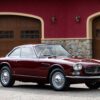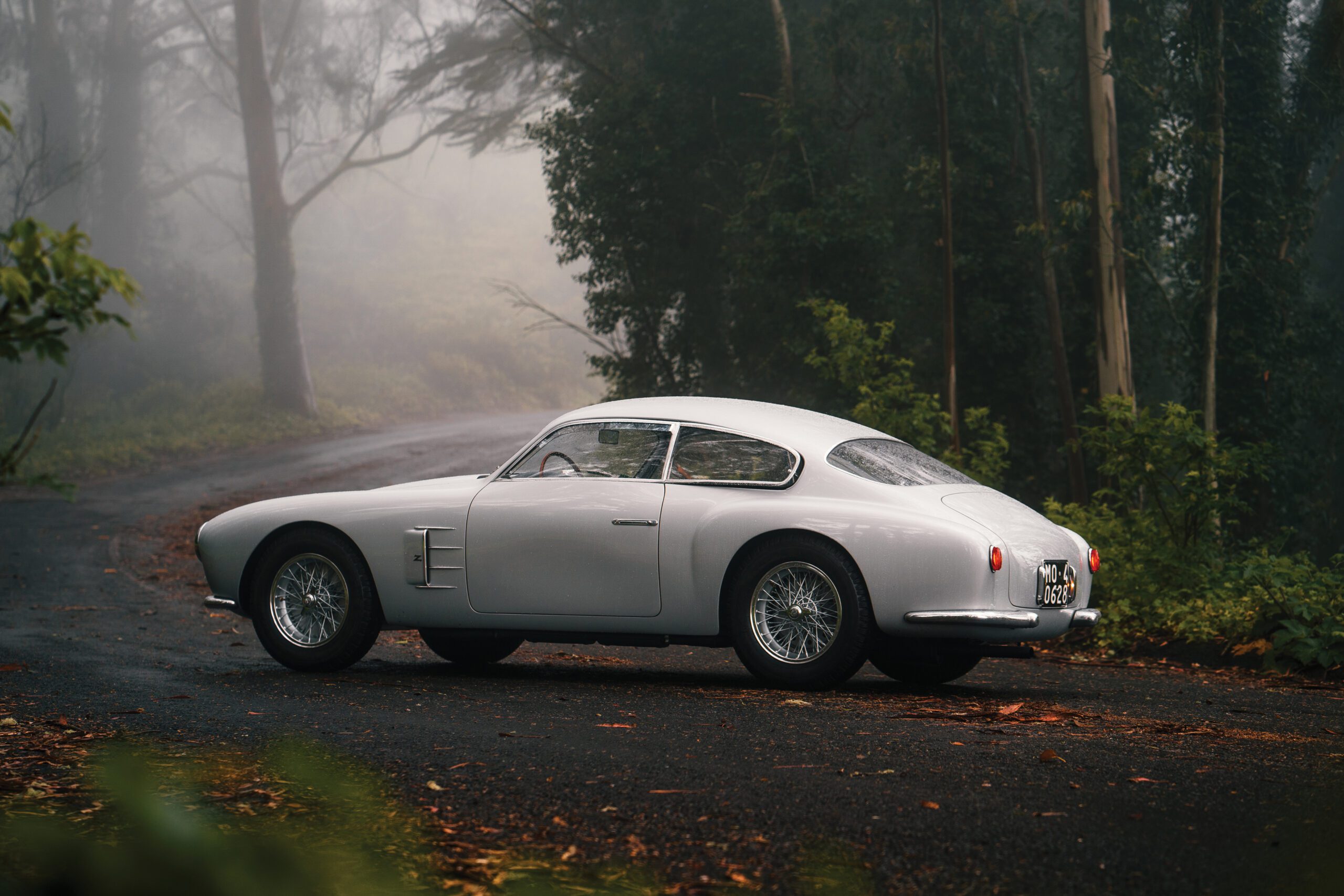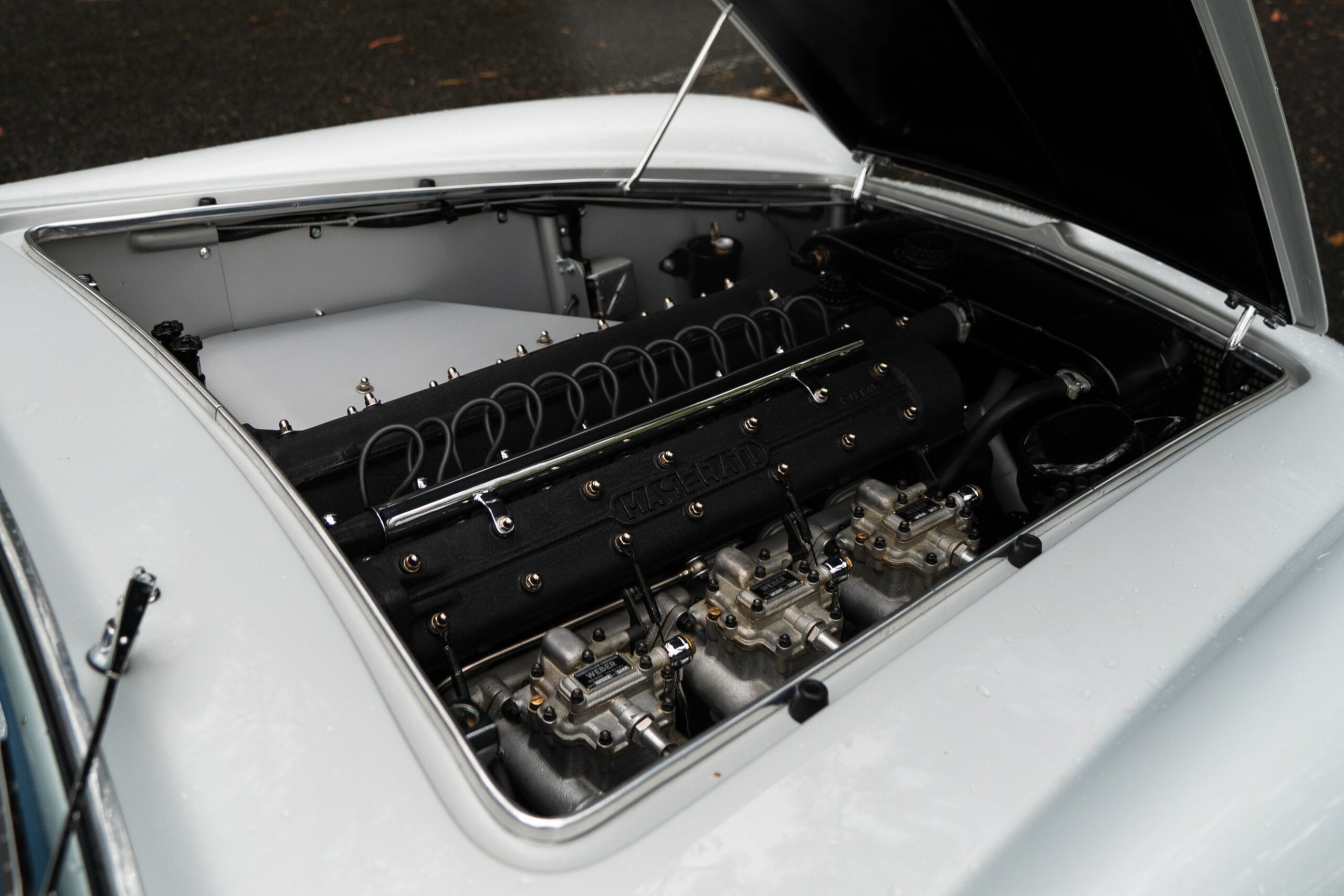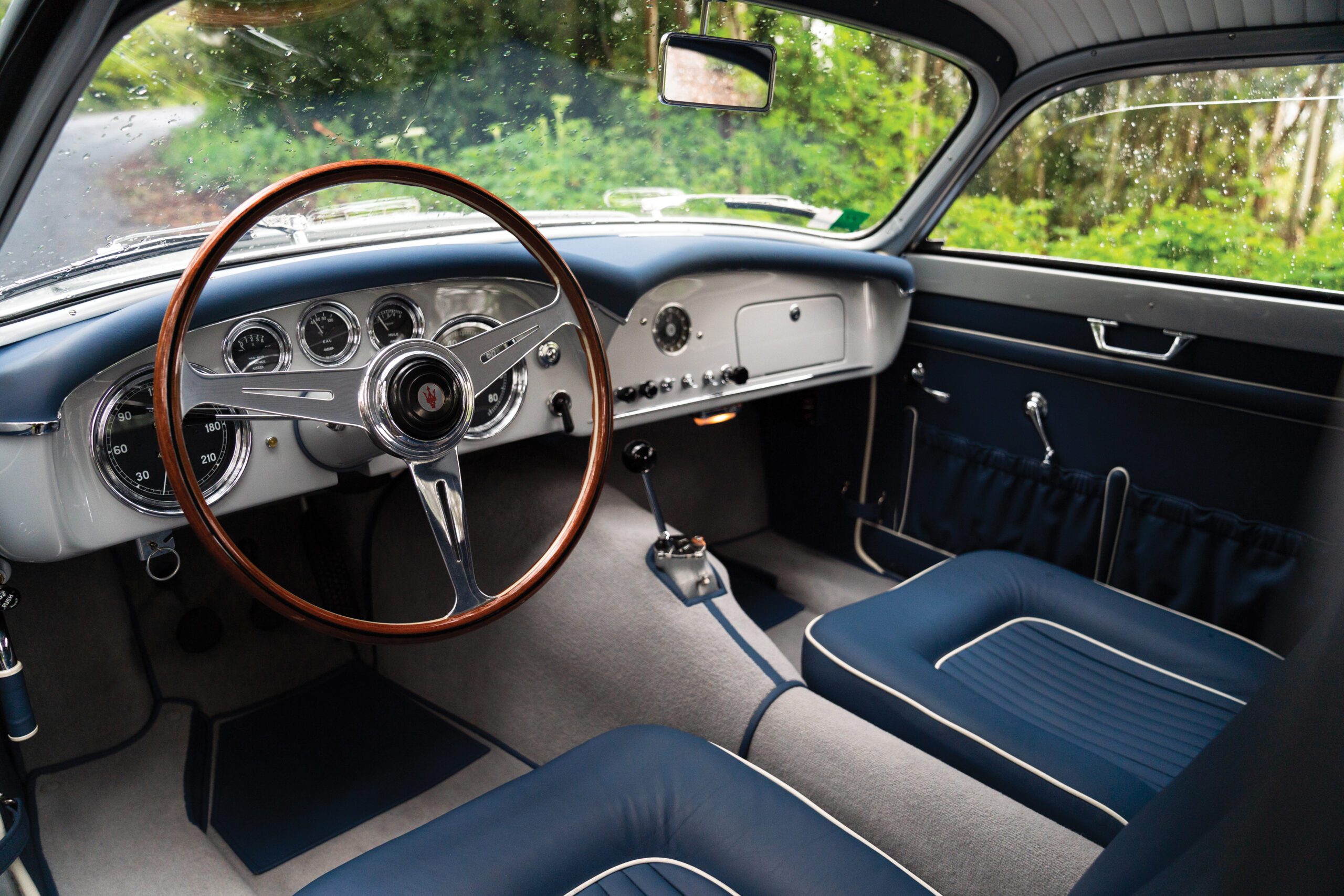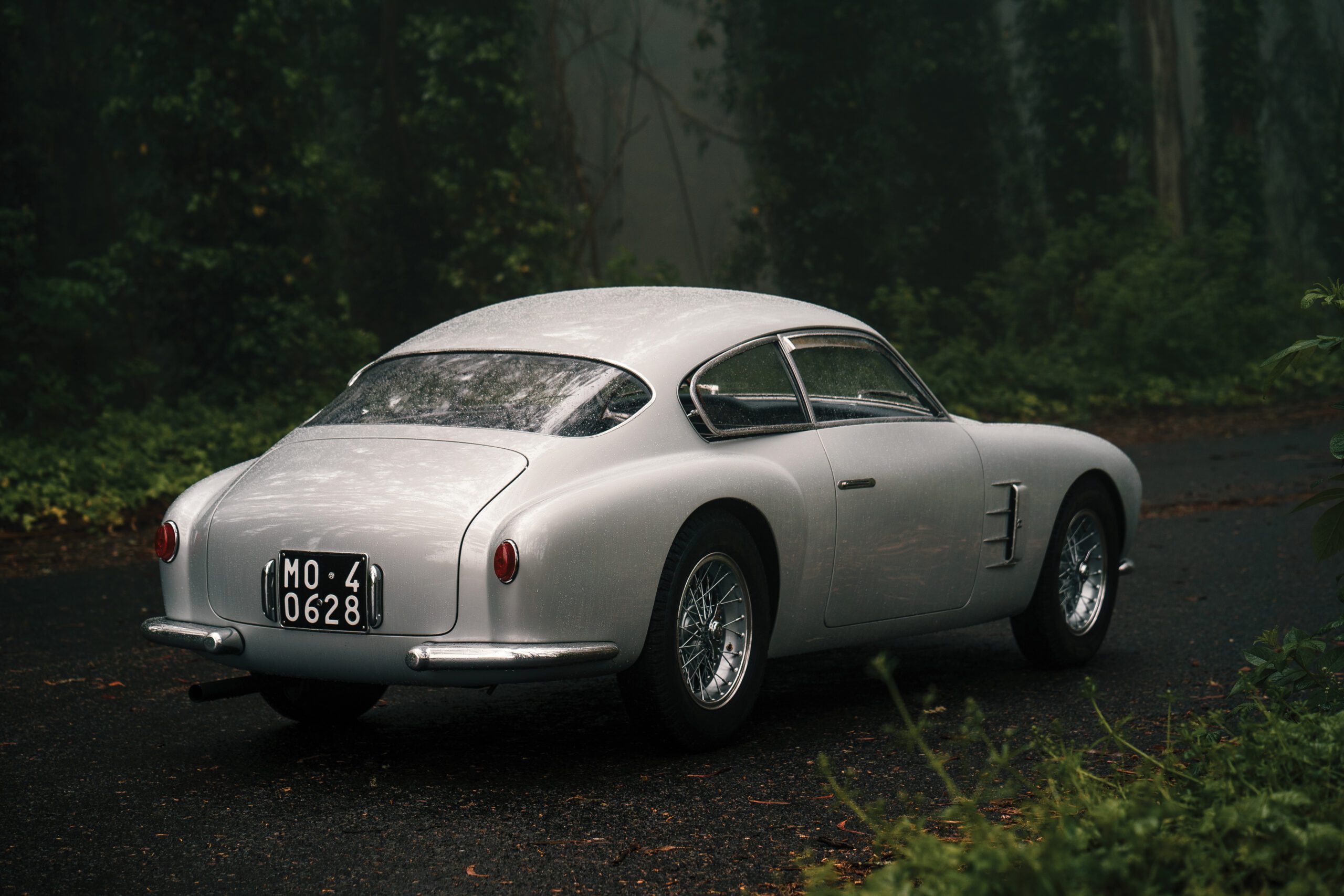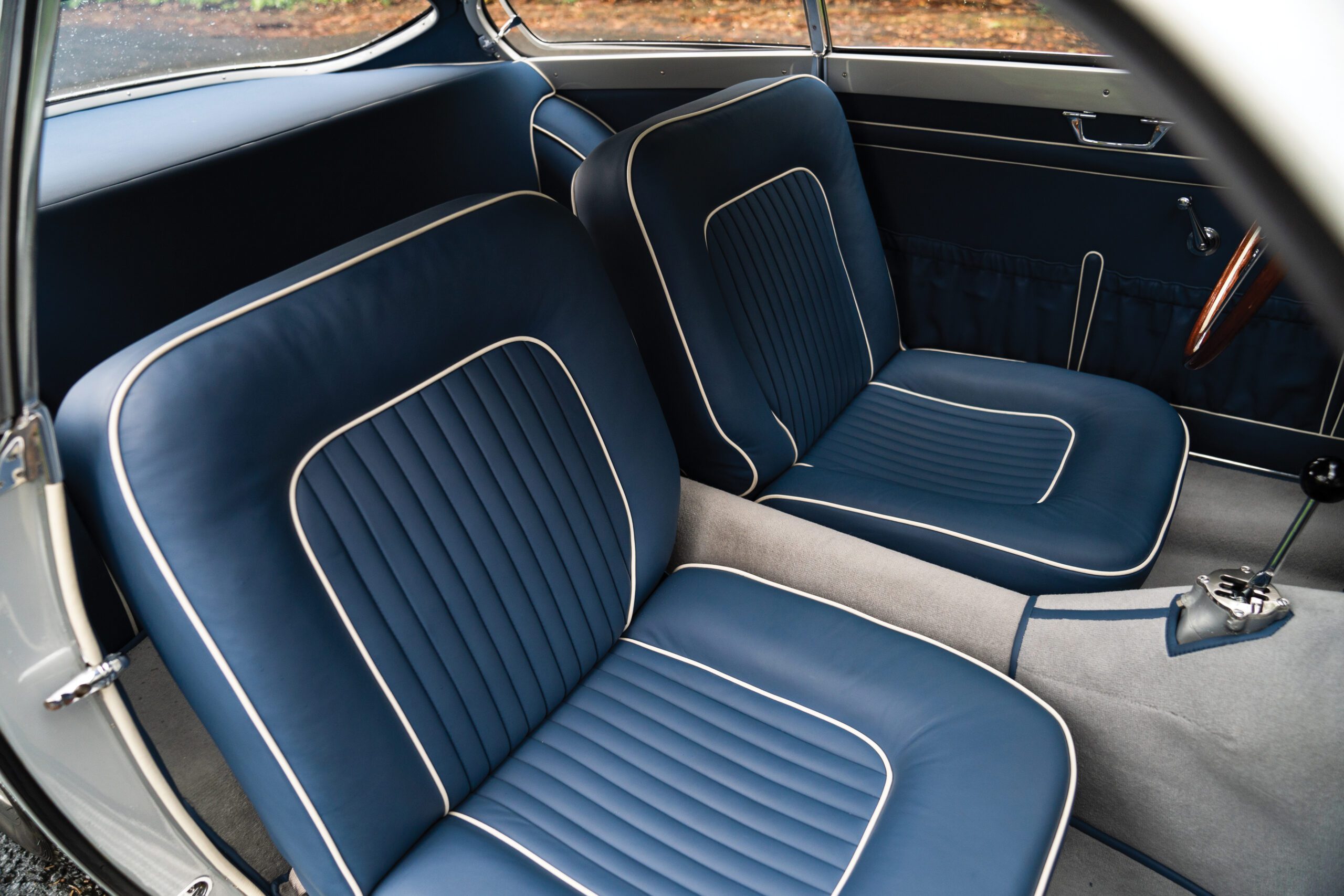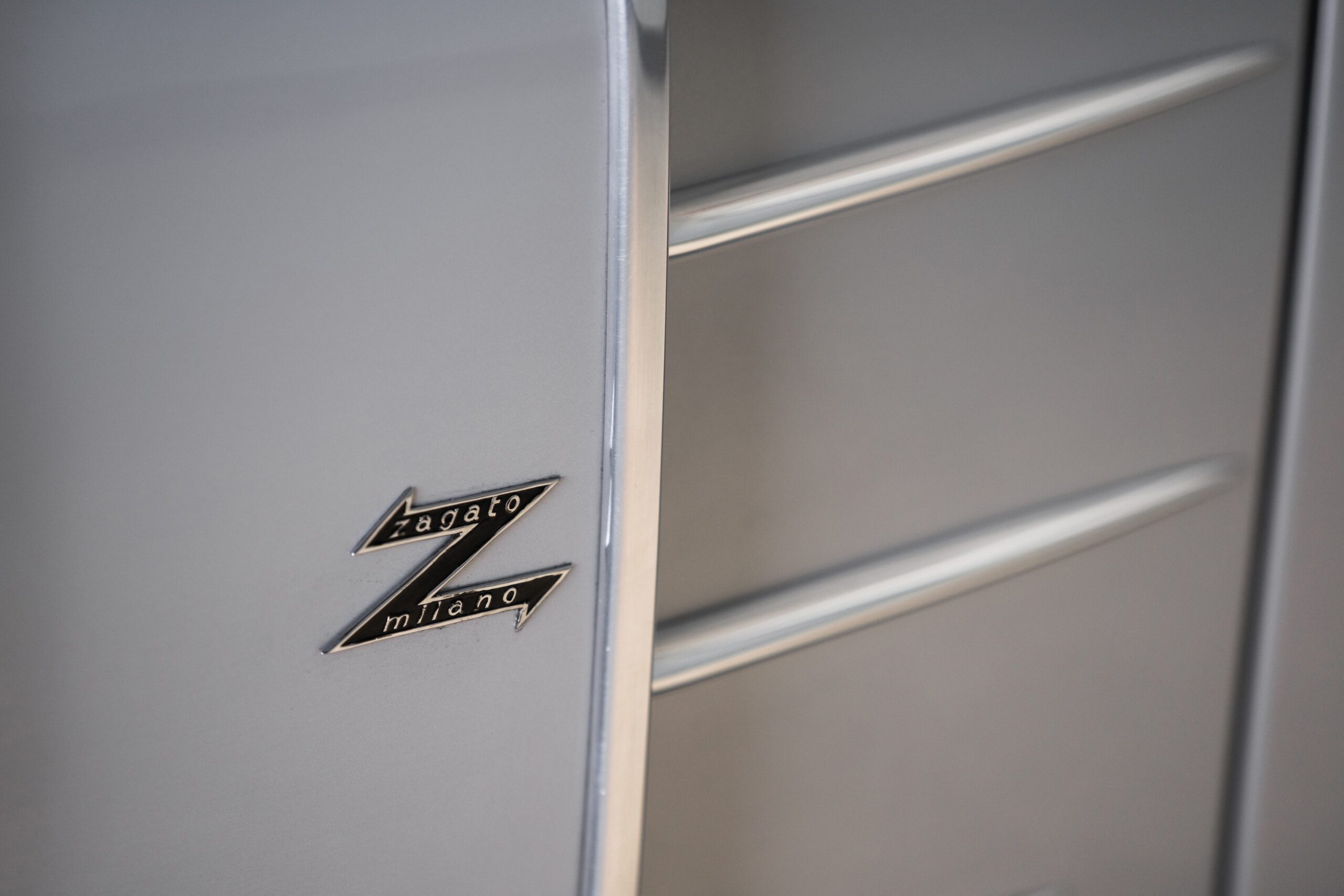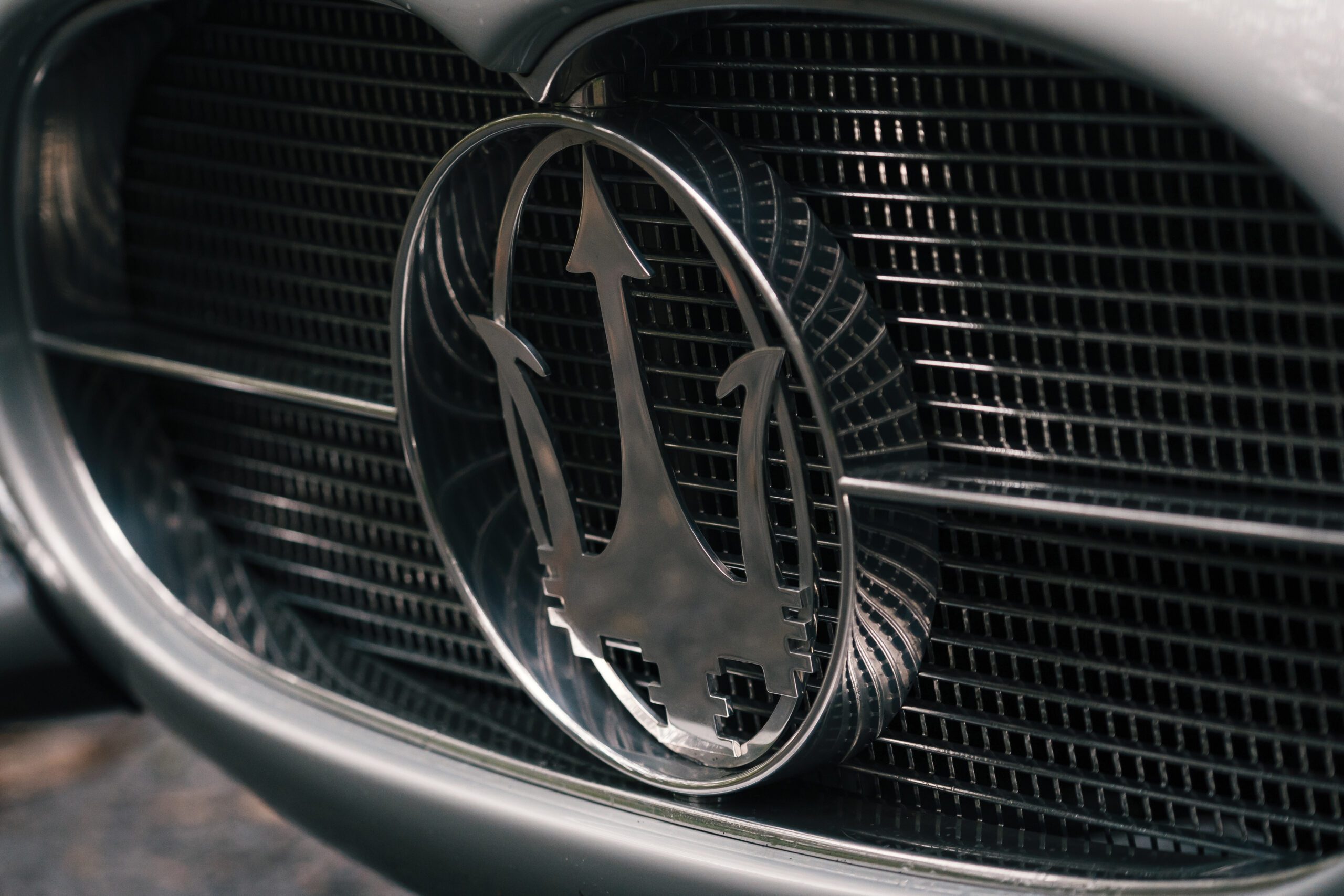In the late 1930s and early postwar years, Maserati excelled in building small displacement sports and open-wheel formula cars. Transitioning from 4-cylinder formula cars, Maserati developed the 1.5-litre 6-cylinder A6G with various bore/stroke dimensions and both single and double overhead camshafts.
They also offered single and double ignition cylinder heads, maximizing the performance of their engines. The A6GCS sports cars and A6GCM monopostos were consistently successful, attracting competitive buyers.
In 1954, Maserati introduced the A6G/54 (later A6G/2000) Gran Turismo, a competition car with wider, more comfortable bodywork from coachbuilders like Pinin Farina, Frua, Allemano, and Zagato.
The cutting-edge over-square bore and stroke of 76.5mm x 72mm allowed reliable high-speed performance at 6,000 rpm, making 2-litre Maseratis strong competitors against larger engines from Jaguar, Aston Martin, and Ferrari.
In 1956, Maserati launched the famed 250F grand prix monoposto, driven by legends like Juan Manuel Fangio and Stirling Moss, which competed effectively against Mercedes-Benz and Ferrari. This success elevated Maserati’s reputation and brought wider recognition to the A6G/2000.
Photos by Karissa Hosek courtesy of RM Sotheby’s


